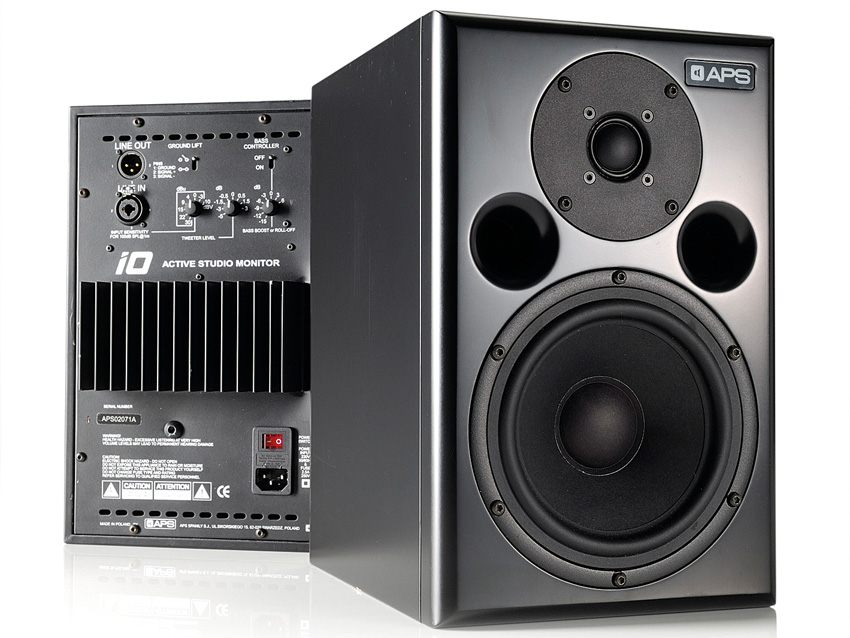MusicRadar Verdict
A great-sounding mid-price monitor which could ruffle the feathers of the big boys.
Pros
- +
Clear, high-quality sound. Remarkably free from colouration. Reasonable bass extension for this size...
Cons
- -
...Though bass junkies will want something bigger.
MusicRadar's got your back
APS's IO, is the smaller, near-field-centric brother of the company's Aeon monitor.
The IO reaches us via a slightly unusual international collaboration, as while APS is a Polish company, IO's drivers are built by SEAS in Norway.
Whereas Aeon is a near-/mid-field monitor, the smaller IOs are designed for near-field use alone. The tweeter and woofer speakers are fed by independent amplifiers which are housed on the monitor enclosure's back plate, while the rear of each monitor provides a by-now-familiar set of switches to ensure acoustic compatibility with your room.
There are independent detented gain dials for the tweeter and woofer here, with -5 to +3dB of gain assignable to the tweeter and -15 to +6dB available for the bottom end. Input can come via either XLR or 1/4-inch line inputs and there's a direct XLR output on the back too.
Sound
So, much more importantly, how do they sound? Very impressive actually.
If you're lucky enough to spend every day of your life sitting in front of a pair of trusted studio monitors, it's amazing how even subtle unfamiliar colouration from a new pair of speakers can seem extreme, but the IOs seemed immediately transparent, familiar and perfectly capable of holding their own.
We were impressed by the low mid range in particular, which can clutter so easily on smaller speakers, but here, just gets on with an honest job. The bass extension is good too, and while no sub-bass junkie could afford to completely trust any monitor of this size, the rest of us could work on our trusty low-end in complete confidence without feeling there might be sinister things going on below the audible horizon.
The top end is clear without being overly abrasive, and while the sound can wear on you at reasonable volume after a time, this is again true for all monitors which favour transparency over a deliberately smoother, more artificial response.
Summary
The IOs really impressed us - partly because they don't try too hard to impress. That might sound odd, but you don't have to go too far to find monitors that almost seek to purposefully colour sound to provide a more impressive first experience which, over time, does an owner no favours.
The IOs avoid these problems as they're not afraid to provide an honest listening experience, and while the bass extension can never be fully trustworthy on a monitor of this size, it's every bit the equal of its main rivals at this price and beyond.
It's rather nice to have another quality monitor on the block - APS knows exactly what it's doing and the IO should be added to your 'must try' list if you're shopping in this busy area of the market.
Future Music is the number one magazine for today's producers. Packed with technique and technology we'll help you make great new music. All-access artist interviews, in-depth gear reviews, essential production tutorials and much more. Every marvellous monthly edition features reliable reviews of the latest and greatest hardware and software technology and techniques, unparalleled advice, in-depth interviews, sensational free samples and so much more to improve the experience and outcome of your music-making.
“We were arguing a lot and we were miserable”: How Green Day exceeded expectations with their most ambitious song
"There’s plenty for us guitarists to learn – and ‘less is more’ is the overriding lesson": how to play like George Harrison on The Beatles' Abbey Road
“They didn’t like Prince’s bikini underwear”: Prince’s support sets for the The Rolling Stones in 1981 are remembered as disastrous, but guitarist Dez Dickerson says that the the crowd reaction wasn’t as bad as people think











